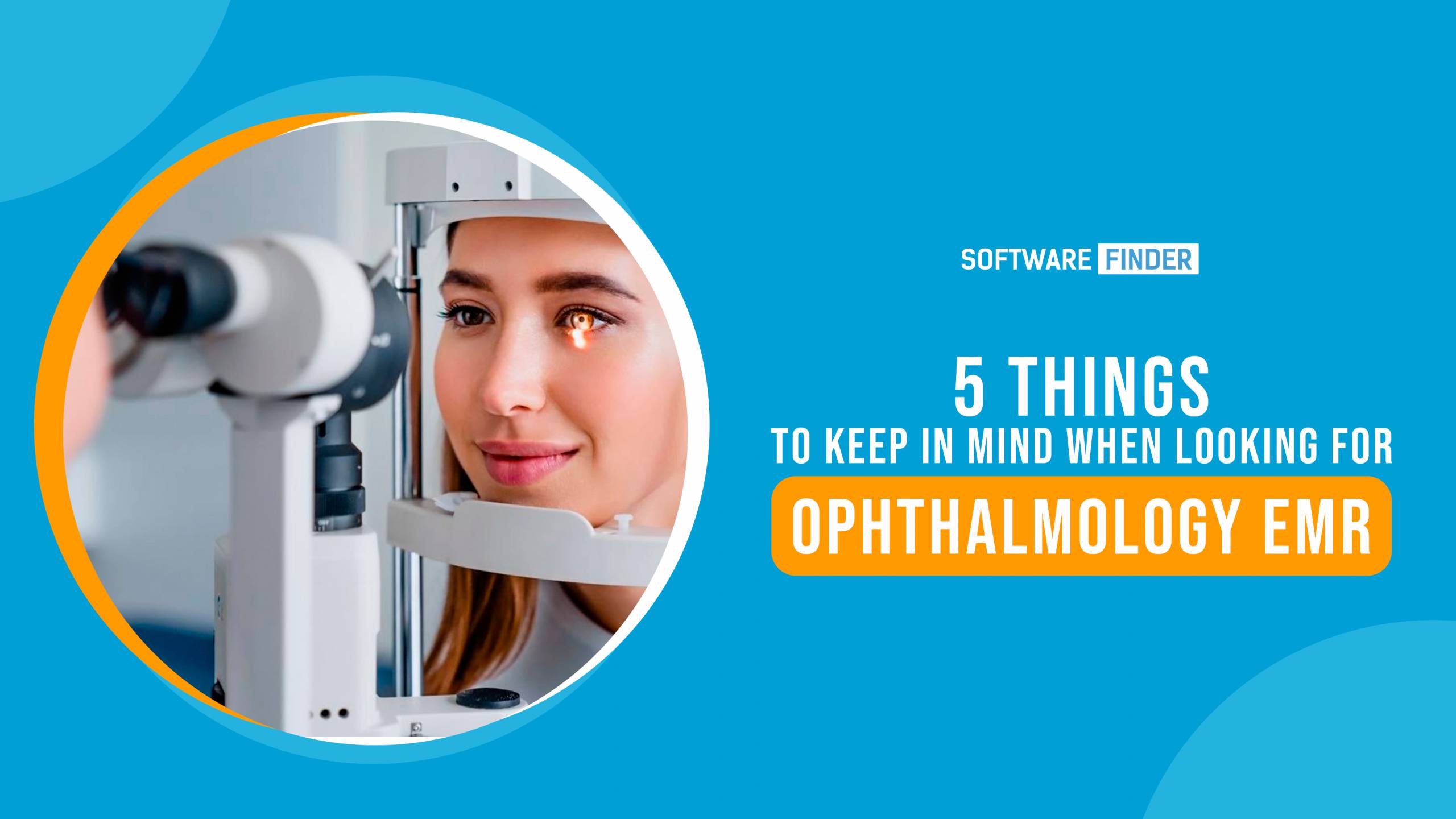About Ophthalmology EMR Software
Ophthalmology is a branch of medicine that focuses on disorders with the eyes. Ophthalmologists treat all types of eye infections, vision disorders, eye surgery, and other eye-related disorders, no matter how complex or simple the condition is.
Ophthalmologists are primarily concerned with eye disorders and diseases, but they must keep track of a lot of information. Individual patient cases must be handled, procedures must be arranged, prescription slips must be filled out, and billing must be kept up to date, not to mention the numerous test results to sort and organize in patient files, as well as administrative responsibilities.
Ophthalmology Electronic Health Records software, often known as Ophthalmology EHR software, was established with the goal of combining all of these activities into one platform, making it easier for physicians to administer their offices. Specialized capabilities are offered in ophthalmology-specific EHR software that is not available in the standard software.
In this piece, we are going to talk about 5 things that an Ophthalmology EHR software must have to be considered as a good software for this particular practice.
5 Things to look for in an Ophthalmology EMR Software
To comprehend and determine what the best EHR software for ophthalmology is, we must first comprehend what makes any EHR software suitable for this area. To accomplish so, we need to know what characteristics ophthalmologists look for. We are going to list down 5 features that are very important for Ophthalmology practices.
1. Specialty Specific Templates
EHR templates are always improving, adding features that make them more efficient, reliable, and simple to use. It is more vital than ever for practices to provide for ample EMR template modification in this age of constantly changing EMR templates. Rigid EMR templates can easily sink a practice that is otherwise viable.
If your potential Ophthalmology EMR Software offers you a bunch of different templates that you can customize easily then that already gets bonus marks. A decent ophthalmology EHR Software must have sub-specialties within the field by offering tools and equipment tailored to certain patient diagnoses and provider types. Some of the few templates that Ophthalmology EHR Software should have are:
- Glaucoma patients
- Cataract specialists and refractive surgeons
- Pediatric ophthalmology
- Ectropion
- Entropion
- Graves’ disease
2. Electronic Prescriptions
For most doctors, having e-prescription capabilities is a game-changer. This tool allows you to virtually write prescriptions and send them to a drugstore that is most accessible for your client. This is also beneficial to your patients because they no longer need to visit your office to obtain their medication letters.
Aside from that, the system should ideally look for any prescription medications that could be harmful to the patient and alert you. Many ophthalmology EHR reviews mention how this function alone is worthy of the ophthalmology EHR price because it saves you a lot of time and perhaps puts patients at risk. Also, check to see if the module is user-friendly and includes speech-to-text abilities or even the capacity to detect handwriting, so that your existing note-taking method may be readily integrated into any EHR you choose.
3. Patient Portal for Improved Patient Engagement
Another advantage that ophthalmologists frequently emphasize in their EHR reviews is the patient portal, which effectively eliminates 50% of the normal responsibilities you previously had. Patients can book their own consultations and keep track of their follow-up appointments using this tool.
They can also fill out their own medical information and upload documents and tests that doctors need prior to their consultation, saving you time and effort! Aside from that, a patient portal allows your patients to contact you and retains a record of their interactions for future reference. Overall, the ophthalmology EH is well worth having a patient portal function.
4. Ophthalmology Dashboards and Workflow Management
The best ophthalmology EMR software should include a meaningful dashboard that allows doctors to see patient records, demographics, payment processing, and appointments all in one spot. The dashboard also saves time by eliminating the need to launch many tabs.
Moreover, Working in ophthalmology practice means dealing with significant amounts of data to gather and store. All ophthalmology-related workflows should be managed, documented, and maintained by the best EMR software. This aids clinicians in gaining a better knowledge of the medical illness and in making the appropriate decisions at the appropriate times.
5. Easy Claims Management
Claims administration is a difficult aspect of the work, and many medical offices and physicians bemoan the fact that so many claims are rejected due to minor errors. This can be prevented, though, if your EHR software has a claims management tool.
This service will help you be compensated by monitoring the progress of your claims in real-time. If you are rejected, the feature will normally investigate why this occurred so that it could be prevented in the future. Because of how simple it makes everything, many ophthalmology EHR evaluations rate this as the best feature.
Now that you know the five things you need to keep in mind when picking an Ophthalmology EHR Software for you, you must be wondering what the top Ophthalmology EHR Software are. If you want to know what the top Ophthalmology EHR Software are, visit Software Finder.
Final Thoughts!
We understand how difficult it is to find the right Ophthalmology EHR Software for your practice. The best way to find the most suitable software for you is to look at the features it offers. Make sure whatever Ophthalmology EHR you choose for your practice has the feature we have mentioned above. Checking out Ophthalmology EHR Reviews is also a great way to find out what the most loved Ophthalmology EHR Software is and why.
